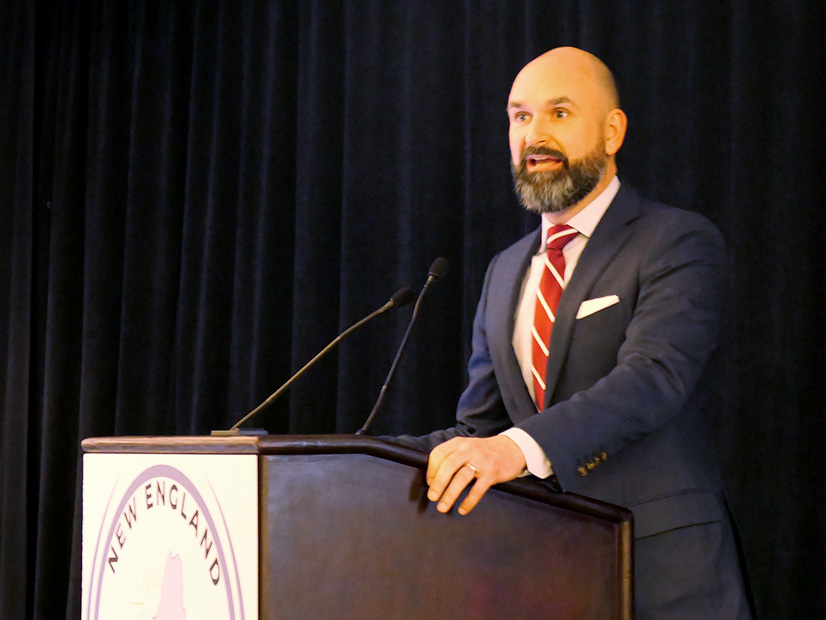The California Public Utilities Commission on Dec. 4 approved Pacific Gas and Electric’s request to recover about $382 million from ratepayers to continue operating the Diablo Canyon Power Plant in San Luis Obispo in 2026.
The approved 2026 revenue amount covers operations and maintenance activities, resource adequacy substitution capacity forecasts and fuel from 2025 through 2030, among other items, the decision says.
“I know these issues [in the decision] have not been easy,” CPUC Commissioner Darcie Houck said. “The extended operations of Diablo Canyon Power Plant are a critical piece of the state’s electricity reliability requirements, and PG&E does need to be compensated consistent with the statute.”
Diablo Canyon had been scheduled to close by 2025, but in 2023 the CPUC approved a 5-year extension for the plant, keeping its two reactors online until at least 2029 and 2030. The approved 2026 revenue requirement will decrease the average bundled service rate for PG&E customers from about 34.8 cents/kWh to about 34.6 cents/kWh.
The revenue requirement costs will be split among PG&E (44%), Southern California Edison (46%) and San Diego Gas & Electric (10%). The decision requires PG&E to provide a “detailed account” of why it did not seek government funding to offset certain ratepayer costs.
“The tracking of costs is going to continue to be very important to ensure that there is no double recovery at a later date,” Commissioner John Reynolds said.
SGIP Refunds
At the Dec. 4 voting meeting, the CPUC also approved a decision that closes the ratepayer-funded portion of the Self-Generation Incentive Program (SGIP), setting out the return of leftover money to ratepayers, while establishing rules for implementing the portion of the program financed by the Greenhouse Gas Reduction Fund (GGRF).
The SGIP was implemented more than 20 years ago to provide incentives to certain distributed energy resources on the customer’s side of the utility meter to help shave peak demand. Qualifying technologies included internal combustion engines, gas turbines, energy storage systems, and combined solar and energy storage systems, among others.
The structure of the program has gone through multiple iterations, and over time its focus has shifted from reducing peak load to cutting greenhouse gas emissions.
In 2020, SGIP was extended from Jan. 1, 2021, to Jan. 1, 2026, under California Senate Bill 700, which authorized the CPUC to collect $166 million in ratepayer funds per year for the program from 2020 to 2024. In 2022, Assembly Bill 209 removed a requirement that the CPUC administer solar resources separately from other technologies under the SGIP, provided funding for combined solar and storage resources and directed the agency to use AB 209 funds for all residential customers, including those served by publicly owned utilities.
In 2023, SB 102 allocated $280 million in GGRF money to the SGIP and restricted participation to eligible low-income residents installing behind-the-meter storage or solar-plus-storage systems. According to the CPUC’s ruling, the GGRF-funded SGIP budget was opened for reservation in June 2025. The program’s administrators — namely the state’s utilities — are expected to administer the GGRF-funded SGIP similarly to the ratepayer-funded program.
SGIP projects are subject to time-of-use and demand response requirements to support grid reliability and were required to enroll in a TOU rate and DR program for 10 years.
“Once SGIP closes it will be important for the electric investor-owned utilities associated with SGIP projects and customers to monitor ongoing compliance with TOU and DR requirements to ensure that the state is achieving the full ongoing benefits of these systems,” the CPUC said in the decision. “This approach will allow SGIP to close before all projects get through the 10-year permanency period while maintaining program and grid benefits.”
High Stakes on Undergrounding
The CPUC approved a resolution that updates its guidelines for undergrounding electric distribution lines. The updates include new requirements for determining whether cost recovery is reasonable for an undergrounding project; a revised method for choosing the most cost-efficient projects; and an explanation of how to calculate cost-benefit ratios to maximize wildfire risk reduction and minimize costs, among others.
“Our electric grid … has experienced catastrophic failures leading to loss of life and home,” Reynolds said. “This has led us in this regulatory space to rethink our approach to risk on the grid.”
“We know we will need additional standards to judge what undergrounding projects should be funded by ratepayers … the costs here are enormous,” Reynolds added. “We know we will be evaluating 10 to 11 figures in capital costs with average monthly customer bill impacts as high as $25. With stakes that high for a single capital program, we need to get the methodology right.”
The CPUC also approved a new rate for 2026 for the state’s wildfire fund non-bypassable charge. The new rate of $0.00591/kWh rate will add about $909 million to the fund, according to the decision.
